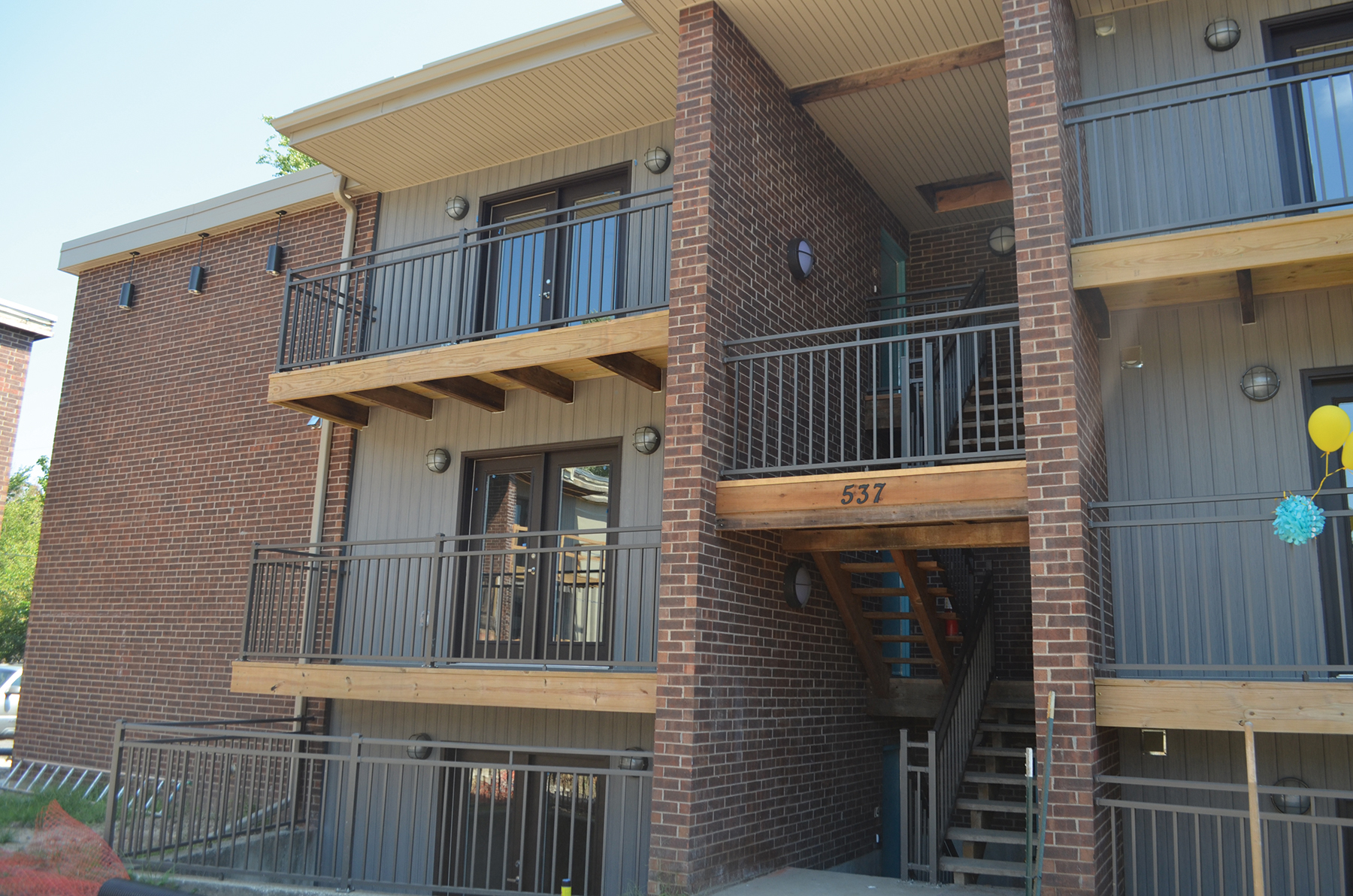Paul Thompson
Northeast News
The City of Kansas City, Missouri is taking big steps to ensure that the dream of home ownership is attainable for as many residents as possible.
The KCMO City Council’s Housing Committee was introduced to a wide range of options for boosting affordable housing availability in Kansas City last week at City Hall, with the openly-stated goal of passing palpable affordable housing legislation before the end of 2018.
To that end, Housing Committee chair Quinton Lucas and (non committee member) Mayor Pro Tem Scott Wagner have co-sponsored a suite of seven ordinances and resolutions that they hope to discuss over the next month. Meanwhile, Neighborhoods and Housing Services Director John Wood appeared before the committee on Wednesday, September 12 to roll out the City’s aggressive new affordable housing plan, which would hinge upon the creation of a $75 million catalytic housing development trust fund that would create and preserve 5,000 additional single family and multi-family housing units by December 2023.
Further plans include the adoption of less burdensome regulations and appropriate incentives for non-profits and private developers looking to contribute resources to affordable housing, an emphasis on mixed-income developments, and the creation of a Tenant/Landlord University to model the best proactive practices.
According to Wood, part of the reason that change is needed in regards to affordable housing policy is that the median household income in Kansas City is just $47,480, or roughly $8,000 less than the national median household income of $55,532. Furthermore, Wood told the Housing Committee that over 30,000 households in KCMO have an income of less than $15,000 annually, creating a “substantial demand for housing at very low income levels.”
The package of legislation is the result of a resolution passed by the City Council in November of 2017 that directed City staff to drill down the greatest affordable housing needs in the city.
On September 12, Lucas outlined his own recommendations to ease the burden on residents making 80% of the area median income (roughly $38,000), which include 1) a requirement that 15% of all units in taxpayer-incentivized developments be reserved for those below that income level; 2) an increase of $2,000 in the City’s business tax on out-of-state purchases, with those funds to capitalize the first $15 million of the proposed $75 million catalytic housing development trust fund; 3) an emphasis on the development of greater density in development near transit hubs; and 4) the adoption of inclusionary zoning for project areas that aren’t incentivized with taxpayer dollars.
Lucas said after the September 12 meeting that’s he’s not in favor of compulsory inclusionary zoning tactics that have been undertaken in other cities, but rather that he hopes to fight exclusionary zoning maneuvers that serve to isolate low-income residents.
“I’m not sure that the Kansas City housing market is quite at that place where we can just do these mandatory inclusionary zoning laws in areas where the market may not be ready for them,” Lucas said.
One emphasis of the affordable housing ordinances and resolutions will be the abatement of existing dangerous and deteriorated structures, the removal of blight, and the fast-tracking of rehabilitation projects and infill development. For instance, one idea is to provide rehabbers with a “safe harbor” window that prevents codes violations from occurring while work on a project is ongoing.
Sixth District Councilman Scott Taylor attended the September 12 Housing Committee meeting to offer thoughts about affordable housing solutions in the city. Taylor has championed his own east side revitalization proposal, and has suggested that a potential funding mechanism for the $75 million housing trust fund could be derived from expiring TIF agreements, at least one of which he believes will expire with a surplus in the range of a couple of million dollars.
Taylor also proposed identifying a funding source to continue the City’s dangerous building demolition program. Nearly 800 homes have been demolished thanks to the $10 million demolition program that was established in 2016, but Taylor noted that in the process, an additional 300 or so structures have been added to the dangerous buildings list.
“We put $10 million into a fund to tear down dangerous homes,” Taylor said. “We have almost 800 of those done…we now have 289 more buildings that we need to address.”
Though a slew of KCMO landlords showed up at the September 12 Housing Committee meeting to voice opposition to the City’s affordable housing plans, many of them were hung up on the Healthy Homes inspection program that was approved by voters in the August primary election.
“It sounds like some of them wanted to re-litigate what had already been decided by the voters,” said 1st District Councilman Scott Wagner. “Someone needs to tell them, ‘Hey, that ship sailed.’”
One landlord suggested that the City could simply rely on available Housing and Urban Development (HUD) programs to fund its affordable housing goals, though Lucas countered that relying solely on federal funding is not feasible in today’s political climate.
“If Jimmy Carter was still president, I would agree that HUD has all these resources and that sort of thing,” Lucas said. “We’ve seen a declination in HUD’s investments; we’ve seen it in the last administration, the current one, and so I don’t have that same faith that there are a wealth of federal programs that can fund us out of our affordable housing problem.”
Wagner also took issue with Councilman Taylor’s east side revitalization plan, which he said doesn’t include adequate funding mechanisms.
“He’s asking for $10 million to revive the east side, and I’m still trying to figure out where he intends to get it, if not the general fund,” Wagner said.
Lucas has similar concerns, chiefly that Taylor’s plan isn’t holistic enough to solve affordable housing needs in all areas of the city.
“We have affordable housing concerns in older parts of Clay County in the Northland, we have them in southwest Kansas City, particularly around 103rd Street when you get to Wornall and Holmes,” Lucas said. “Those are not traditional east side areas, and so I think it’s important for us to recognize that we’re trying to come up with a solution that’s holistic and comprehensive, and not just one that speaks to only one part of the city.”
Lucas lamented that in the past, Kansas City leaders have attempted to piecemeal a solution to affordable housing needs, one special project at a time. This time, he wants to be at the forefront of a plan that addresses those needs simultaneously.
“It’s not one Linwood Shopping Center, it’s not one multi-family apartment unit, it’s not one tax,” Lucas said. “Instead, it’s actually something that looks at the city as a whole and tries to come up with good policies long-term.”
Lucas also addressed his plan to potentially pull some additional affordable housing funds from the 1/8-cent East Side economic development sales tax funds. He indicated that the idea would only be implemented with the permission of that East Side board. The goal, he added, is simply to get that conversation going.
“What we’re really saying is, we need to have a conversation about where we’re getting the money from,” Lucas said. “We have not had that yet.”
“If we’re going to fund these dreams, instead of everybody just rolling them out, we need to actually identify a source for them,” Lucas added. “I think we’re a step further in the ordinance and resolutions that you heard discussed (on September 12) than we are in funding programs where everybody says $20 million for x or y, but have identified no sources.”
Moving forward, the Council is expected to return during the last week of September to begin looking at specific resolutions and ordinances that can be advanced to a full Council vote before the end of the year. In the meantime, the legislation is expected to be tweaked to address as many concerns as possible.
“The real answer is going to be working with landlords, working with any other number of groups to make sure that we have and maintain a long-term housing supply in this city,” Lucas said. “Frankly, I think we’ll all work together, because it’s essential that we do. The City needs them, and frankly I think they need a healthy city that has new residents and has these opportunities.”




















